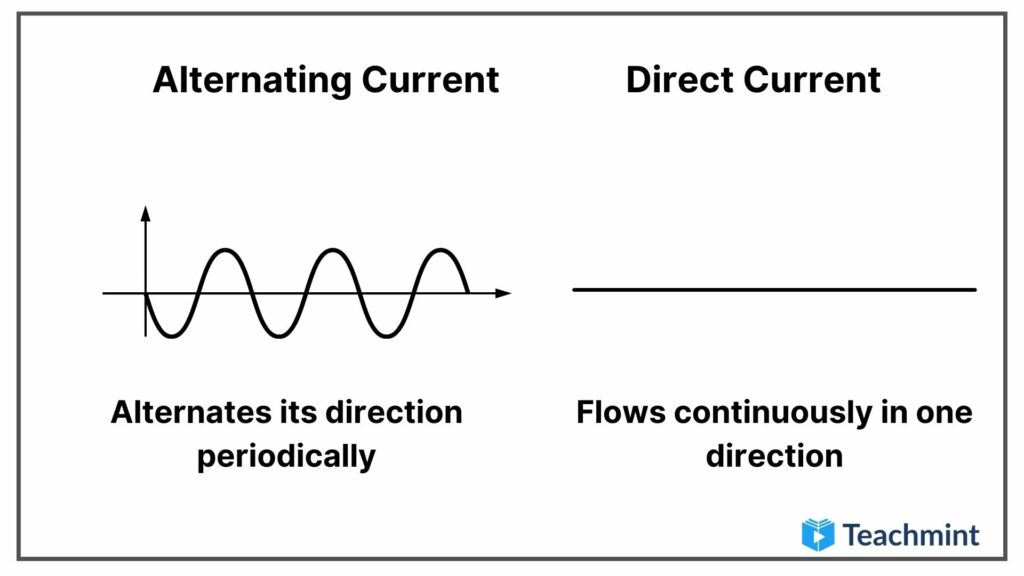Direct Current (DC) is a fundamental concept in the field of electrical engineering, with a rich history and diverse applications. In this comprehensive guide, we will delve into the intricacies of direct current, exploring its definition, characteristics, generation, and applications.
Understanding Direct Current:
Direct Current, commonly abbreviated as DC, refers to the steady and unidirectional flow of electric charge in an electrical circuit. Unlike Alternating Current (AC), where the flow of electric charge periodically reverses direction, DC maintains a constant polarity, flowing consistently from the positive to the negative terminal.
Characteristics of Direct Current:
1. Unidirectional Flow:
In a DC circuit, electric charges move in a single direction, from the positive terminal to the negative terminal. This unidirectional flow is a defining characteristic of direct current and distinguishes it from alternating current.
2. Constant Voltage:
DC voltage remains relatively constant over time, providing a stable and predictable power supply. This characteristic makes direct current suitable for powering electronic devices that require a steady voltage to operate efficiently.
3. Compatibility with Storage:
DC power is compatible with storage devices such as batteries. In battery-powered systems, chemical reactions generate a continuous flow of electrons in a specific direction, producing direct current.
Generation of Direct Current:
Direct current can be generated through various methods, including:
1. Battery Cells:
Batteries consist of one or more electrochemical cells that convert chemical energy into electrical energy. These cells produce direct current, providing a portable and reliable source of power for a wide range of applications.
2. Rectification of Alternating Current:
Alternating current from power grids or generators can be converted into direct current through rectification. Rectifiers, such as diodes or rectifier circuits, ensure that the current flows in only one direction, producing a DC output.
3. Photovoltaic Cells:
Solar panels use photovoltaic cells to convert sunlight into electricity. These cells generate direct current when exposed to sunlight, making solar energy an important source of DC power for renewable energy applications.

Applications of Direct Current:
Direct current finds extensive applications across various industries and sectors, including:
1. Electronics:
Many electronic devices, including smartphones, laptops, and televisions, operate on DC power. Internal components such as integrated circuits and microprocessors require a stable DC voltage to function effectively.
2. Telecommunications:
Telecommunication networks rely on direct current to power communication equipment such as routers, switches, and telecommunication towers. DC power ensures reliable operation and facilitates long-distance transmission of signals.
3. Transportation:
Electric vehicles (EVs) utilize direct current for their propulsion systems. DC motors powered by batteries or onboard converters drive the wheels, providing an environmentally friendly alternative to traditional internal combustion engines.
4. Renewable Energy:
Renewable energy sources such as solar and wind power generate direct current. DC power generated from these sources undergoes conversion to alternating current for distribution through power grids or storage in batteries.
5. Industrial Automation:
Direct current is widely used in industrial automation systems for controlling machinery, robots, and manufacturing processes. DC motors offer precise speed control and torque characteristics, making them ideal for automation applications.
Advantages of Direct Current:
1. Stable Voltage:
DC voltage remains constant over time, providing a reliable power supply for sensitive electronic devices and equipment.
2. Efficient Energy Storage:
DC power is compatible with batteries and other energy storage devices, enabling efficient energy storage for off-grid and portable applications.
3. Simple Control and Regulation:
DC circuits are easier to control and regulate compared to AC circuits, making them suitable for a wide range of applications, including automation and telecommunications.
Challenges and Limitations:
1. Transmission Efficiency:
DC transmission over long distances faces challenges related to voltage drop and power loss, limiting its applicability for large-scale power distribution.
2. Conversion Costs:
Converting AC to DC and vice versa incurs additional costs associated with rectifiers, inverters, and converters, impacting the overall efficiency and cost-effectiveness of DC systems.
3. Compatibility with Existing Infrastructure:
The widespread adoption of DC technology requires significant investment in infrastructure and equipment upgrades to accommodate DC-based systems, posing challenges for integration with existing AC infrastructure.
Future Prospects:
Despite its challenges, direct current continues to play a crucial role in powering modern technology and driving innovation in renewable energy, transportation, and industrial automation. Advances in DC transmission, energy storage, and conversion technologies hold promise for overcoming existing limitations and expanding the scope of DC applications in the future.
Conclusion:
Direct current is a fundamental concept in electrical engineering, characterized by its steady and unidirectional flow of electric charge. With its stable voltage, compatibility with storage, and diverse applications, DC power serves as a cornerstone of modern technology, driving innovation across various industries. As the world continues to transition towards sustainable energy and advanced automation, the importance of direct current is poised to grow, shaping the future of energy and technology.
